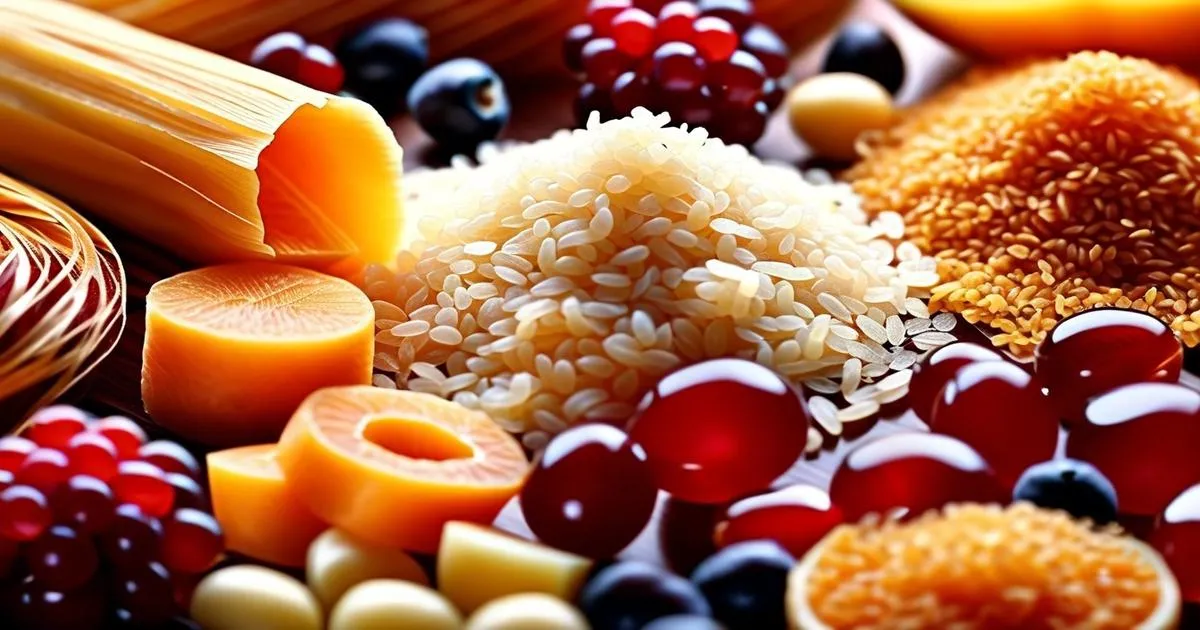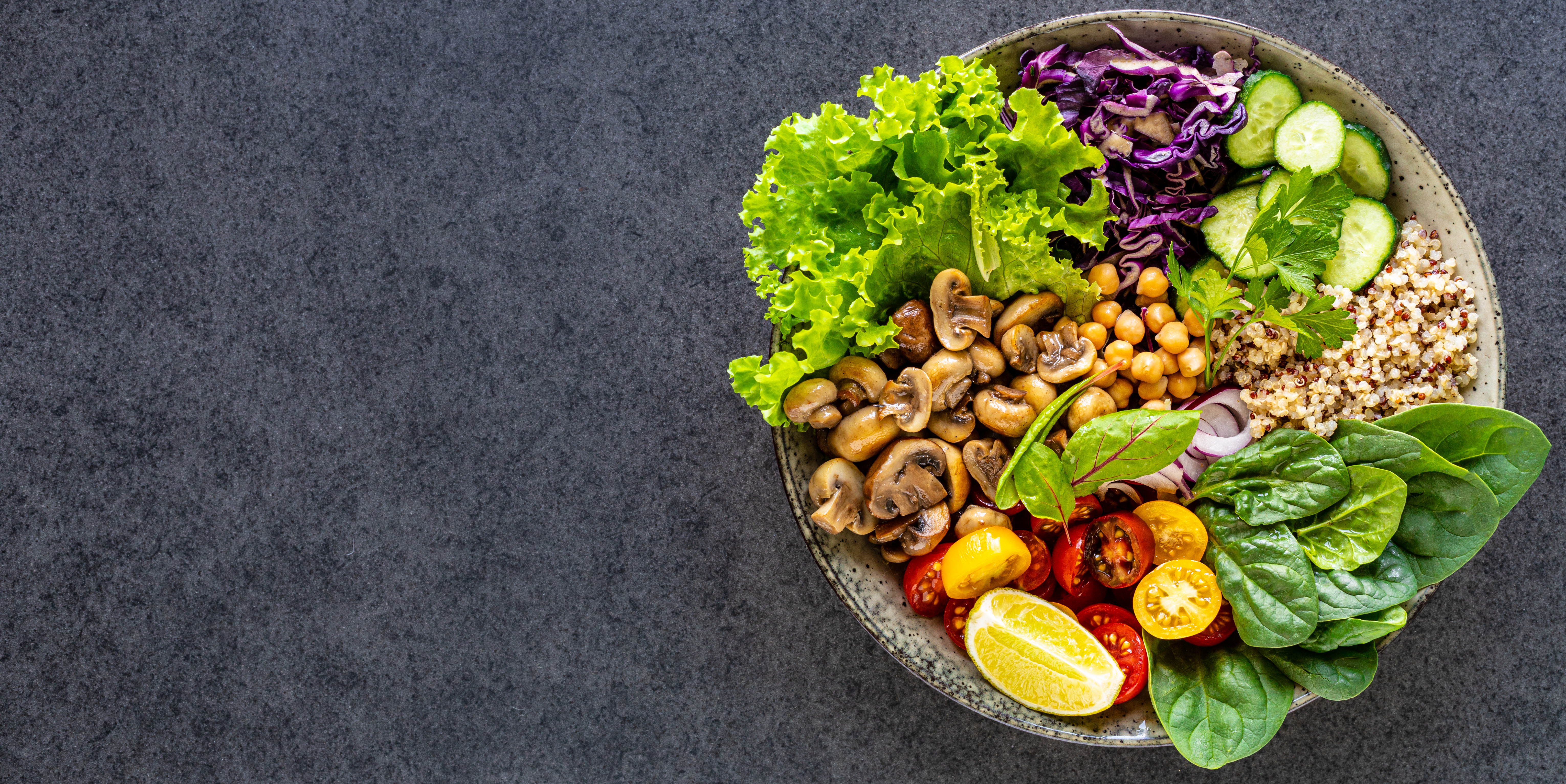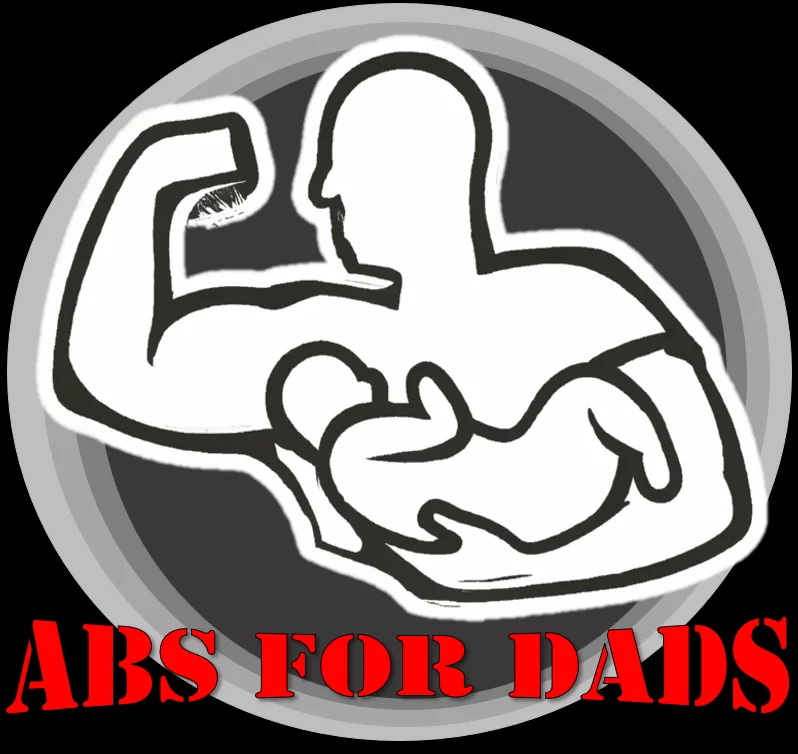THE BLOG
The Ultimate Fitness Blog for Dads
TOPICS
Welcome to Abs For Dads, your premier resource for time-efficient fitness solutions tailored for busy fathers. Discover practical tips and expert advice to transform your health and fitness, seamlessly integrating into your demanding schedule.

Fitness
Explore our curated fitness tips and routines designed to maximize efficiency for the modern dad. Whether at home or the gym, our time-sensitive workouts ensure you achieve optimal results with minimal time investment.

Nutrition
Unlock the secrets of hassle-free nutrition with our easy-to-follow meal ideas and delicious recipes. Abs For Dads empowers you to make informed food choices that align with your fitness goals, promoting vitality and strength.

Lifestyle
Enhance your overall well-being with our lifestyle hacks. From stress management to effective time optimization, our blog covers a spectrum of topics ensuring you achieve success in your fitness journey.

The Nutrition Fundamentals: Understanding Dietary Fiber
As dads, there’s a lot of stuff that we get told we need more of. We need more exercise, we need to increase our water intake, we need this and we need that. Well today we’re going to give you the breakdown on another one of those pesky must-haves. We’re talking about fiber, and you’d be surprised just how much good this nutrient can do for you if you let it. With that, let’s take a look.
Did you know that despite its numerous health benefits, 95% of adults and children do not consume an adequate amount of dietary fiber? We've all heard about the importance of fiber in our diet, but truly understanding its impact on our overall well-being is crucial. By the end of this this post, we'll have gone over some of the significance of dietary fiber, exploring its role in digestion, weight management, disease prevention, and fiber for fitness. We're here to make incorporating more fiber into our daily lives both effortless and enjoyable.
Exploring the Two Types of Dietary Fiber
Soluble and Insoluble
We understand that dietary fiber comes in two main types: soluble and insoluble. The key difference in understanding dietary fiber lies in their interaction with water. Soluble fiber dissolves in water, forming a gel-like substance, while insoluble fiber does not dissolve, instead remaining intact as it moves through our digestive system.
Both types of fiber are crucial for our health. When we consume foods rich in soluble fiber, such as oats, beans, and fruits, it can help lower our cholesterol levels and regulate blood sugar. On the other hand, insoluble fiber found in wheat bran, vegetables, and whole grains adds bulk to our stool and aids digestion by promoting regular bowel movements.
Understanding these differences is vital because each type of dietary fiber offers unique benefits to our bodies. By incorporating a variety of foods rich in both soluble and insoluble fibers into our diets, we can ensure that we're reaping all the advantages they have to offer.
Optimizing Our Dietary Intake
Knowing which foods contain each type becomes essential. For instance:
Soluble Fiber Sources: Oats, barley, nuts & seeds.
Insoluble Fiber Sources: Whole wheat flour products like breads & cereals; vegetables like carrots & tomatoes.

Soluble Fiber: Definition and Food Sources
What is Soluble Fiber?
Soluble fiber, as the name suggests, dissolves in water to form a gel-like substance in our digestive tract. This type of fiber can be found in various plant foods such as oats, legumes, apples, oranges, and other fruits. When we consume foods rich in soluble fiber, it interacts with water to create a viscous gel during digestion.
Consuming soluble fiber is beneficial for our health because it helps lower cholesterol levels and regulates blood sugar. The evidence shows that this nutrient has a positive impact on our overall well-being by aiding in these essential bodily functions.
Food Sources Rich in Soluble Fiber
When we include oats or oatmeal, legumes like lentils or chickpeas, vegetables such as Brussels sprouts or sweet potatoes, and fruits like apples and oranges into our diet plan regularly; we are ensuring an adequate intake of soluble fiber. These food items not only provide us with necessary nutrients but also play a crucial role in maintaining good health.
Incorporating these foods into our meals allows us to benefit from the advantages of consuming soluble fiber. It's important for us to recognize the significance of this type of dietary fiber, especially when aiming to make informed choices about what we eat daily.
Insoluble Fiber: Definition and Food Sources
What is Insoluble Fiber?
As we’ve discussed, insoluble fiber, as the name suggests, does not dissolve in water. Instead, it adds bulk to the stool, aiding digestion and promoting regular bowel movements. This type of fiber passes through the digestive system relatively intact.
When we consume foods rich in insoluble fiber, such as whole grains, nuts, seeds, and vegetables like broccoli, we're helping our bodies maintain healthy digestion. For example, when we eat a slice of whole grain bread or enjoy a handful of almonds as a snack, we're providing our bodies with valuable insoluble fiber that supports our digestive health.
Benefits of Insoluble Fiber
The consumption of grain products containing insoluble fiber can significantly contribute to maintaining regularity in bowel movements. By adding bulk to the stool and speeding up its passage through the intestines, this type of dietary fiber helps prevent constipation and promotes overall gastrointestinal health.
Moreover, by supporting efficient waste removal from our bodies on a consistent basis through regular bowel movements facilitated by insoluble fiber intake from various food sources like nuts and seeds; for instance—our digestive systems remain healthier overall.
Incorporating these foods into our diet ensures that we are getting an adequate amount of insoluble fiber to support healthy digestion while also preventing common gastrointestinal issues such as constipation.
The Role of Fiber in Digestive Health
Promoting Regularity
Adequate dietary fiber intake plays a crucial role in promoting regular bowel movements and preventing constipation. When we consume enough fiber in our diet, it adds bulk to the stool, making it easier to pass through the digestive system. This helps maintain healthy gut motility and prevents discomfort associated with irregular bowel movements.
Fiber also contributes to the overall health of our gastrointestinal tract by supporting the movement of food through the digestive system. Without sufficient fiber, we may experience sluggish digestion, leading to bloating and discomfort. For example, fruits like apples and pears, as well as vegetables like broccoli and carrots are excellent sources of dietary fiber that can aid in promoting regularity.
Supporting Gut Microbiome Health
In addition to aiding digestion, dietary fiber supports a healthy gut microbiome by serving as food for beneficial gut bacteria. These microorganisms play an important role in maintaining colonic health and overall metabolic health. By consuming a high-fiber diet, we provide nourishment for these essential gut microbes which contribute to our overall well-being.
A balanced intake of both soluble and insoluble fibers from various plant-based foods such as legumes, whole grains, nuts, seeds, fruits, and vegetables is essential for ensuring optimal support for our gut microbiota. By incorporating these diverse sources of fiber into our diets, we help maintain a healthy balance within our gut microflora which is vital for good digestive health.
Fiber's Impact on Weight Management and Fitness
Feeling Full and Satisfied
Including fiber-rich foods in our diet is essential for maintaining a healthy body weight. When we consume foods high in fiber, such as fruits, vegetables, whole grains, and legumes, they help us feel full for longer periods. This feeling of fullness can prevent overeating and snacking between meals. As a result, it can potentially aid in weight management by reducing overall calorie intake.
Moreover, the consumption of high-fiber foods supports our digestive health by promoting regular bowel movements. This aids in preventing constipation and bloating while also contributing to a sense of satisfaction after eating. For example, adding chia seeds or flaxseeds to our breakfast smoothie or oatmeal increases the fiber content, keeping us satiated throughout the morning.
Supporting Energy Levels during Physical Activity
Consuming adequate amounts of dietary fiber is crucial for supporting energy levels. Fiber plays a role in regulating blood sugar levels by slowing down the absorption of sugars from food into the bloodstream. This steady release of energy helps sustain endurance during workouts or any form of exercise.
For instance, opting for a snack that combines both protein and fiber before hitting the gym can provide sustained energy without causing rapid fluctuations in blood sugar levels. A simple yet effective choice could be apple slices with almond butter - offering both fiber and protein to fuel our bodies effectively.
How Fiber Benefits Blood Sugar and Heart Health
Stabilizing Blood Sugar
When we consume soluble fiber, it acts like a sponge in our digestive system, slowing down the absorption of sugar into the bloodstream. This process helps to keep our blood glucose levels steady, preventing sudden spikes and crashes. For instance, when we eat oatmeal for breakfast, which is high in soluble fiber called beta-glucan, it can help us feel full longer and maintain stable energy levels throughout the morning.
In addition to this, foods rich in soluble fiber can also play a role in reducing the risk of insulin resistance by improving how insulin works in our bodies. By incorporating more beans, lentils, fruits like apples and oranges with their skin on, and vegetables such as carrots and Brussels sprouts into our meals regularly, we can positively impact our metabolic health while enjoying delicious and satisfying foods.
Promoting Heart Health
Aside from its effect on blood sugar regulation, a high-fiber diet has been linked to lower levels of LDL cholesterol (the "bad" cholesterol) which may reduce the risk of developing cardiovascular disease, including coronary heart disease. To illustrate this point further: imagine adding chia seeds or flaxseeds to your smoothie or yogurt; these tiny powerhouses are packed with omega-3 fatty acids and fiber that contribute to maintaining healthy cholesterol levels.
Moreover, incorporating whole grains like barley or bulgur wheat into our meals instead of refined grains not only adds variety but also provides an extra dose of heart-healthy fiber. These small changes add up over time and can significantly benefit both our blood sugar control and cardiovascular well-being.
Integrating Fiber into Your Fitness Program
Gradual Increase
We've learned that gradually increasing our intake can prevent digestive discomfort. By slowly incorporating more fiber-rich foods, such as whole grains and legumes, we allow our bodies to adjust to the changes without causing bloating or gas. This gradual approach also helps us maintain a balanced diet while reaping the benefits of increased fiber consumption.
Increasing physical activity is another way to integrate fiber into our fitness program. As we become more active, our bodies require additional nutrients for energy and recovery. Incorporating high-fiber foods like fruits, vegetables, and nuts supports these needs while aiding in digestion and overall gut health.
Hydration Importance
Hydration is crucial when consuming more fiber. We need to ensure that we're drinking an adequate amount of water throughout the day to aid in the movement of fiber through our digestive system. Without proper hydration, a higher intake of fiber could lead to constipation rather than supporting healthy digestion.
Balancing different components of our diet - including protein, carbohydrates, fats, and dietary fiber - is essential for a well-rounded fitness-focused diet. By maintaining this balance, we support various aspects of our health while optimizing performance during physical activities.
Overcoming Common Fiber Intake Challenges
Adding Gradually
We've learned that adding small amounts at a time can prevent bloating or gas. By gradually increasing our fiber intake, we allow our bodies to adjust without discomfort. For example, starting with an extra serving of vegetables at one meal and then slowly incorporating more high-fiber foods throughout the day can make a significant difference.
Experimenting with different sources of fiber is crucial in finding what works best for us. We can try including various fruits, vegetables, whole grains, legumes, and nuts in our meals to see which options suit our preferences and digestive systems. This approach not only prevents discomfort but also allows us to enjoy a diverse range of nutrients and flavors.
Planning Ahead
Planning meals ahead gives us the opportunity to intentionally include high-fiber foods throughout the day. For instance, if we know we tend to eat low-fiber lunches while on-the-go, we can prepare a salad or pack some fruit as part of our midday meal. This intentional inclusion ensures that we consume adequate fiber without feeling overwhelmed by sudden changes in diet.
Final Remarks
We've delved into the world of dietary fiber, uncovering its two types, sources, and incredible impact on our overall well-being. From digestive health to weight management and even heart health, fiber plays a crucial role in keeping us healthy and energized. As we navigate our fitness journey, integrating fiber into our diets is a game-changer, helping us overcome common intake challenges and optimize our performance. That’s why the Abs For Dads program accounts for this critical nutrient and helps you stay on top of its intake when you follow one of our meal plans.
But even if you’re not a member, let's challenge ourselves to embrace the power of dietary fiber and make conscious choices to incorporate it into our daily meals. Whether it's adding more fruits, vegetables, or whole grains, each small step towards increasing our fiber intake can lead to significant improvements in our health and fitness.

Where Busy Dads Thrive in Health and Fitness!
Join the Abs For Dads community and redefine your health and fitness narrative. Bookmark our blog for ongoing insights. Prioritize your health without compromising your busy lifestyle – because being a fit and active dad is within reach.
Like What We're Saying? Sign Up For Our Newsletter!

Call 877-395-7147
Email:travis@absfordads.org
Site: www.absfordads.org

Abs For Dads LLC Privacy Policy
